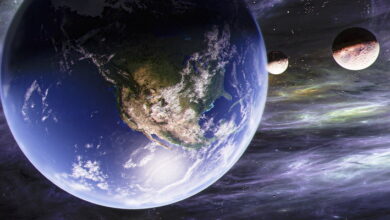Cosmochemistry MCQs with Answers

Welcome to the Cosmochemistry MCQs with Answers, it helps learners quickly identify areas for improvement in Cosmochemistry Online Test.
| Cosmochemistry is the study of the chemical composition and evolution of the universe, focusing on celestial bodies and the processes that shape their chemical makeup. Cosmochemistry MCQs and Cosmochemistry quiz questions evaluate knowledge of these fundamental concepts.
Chemical composition of celestial bodies MCQs explore the elements and compounds present in stars, planets, moons, and asteroids, providing insights into their formation and evolution. Solar system chemistry MCQs delve into the chemical processes and interactions that have occurred within our solar system, shaping its current structure and composition. Meteorite chemistry multiple choice questions focus on the analysis of meteorites, which offer valuable clues about the early solar system and the primordial materials that formed planets. Origin of elements quiz questions examine the processes, such as nucleosynthesis in stars, that led to the creation of the chemical elements found throughout the universe. Understanding cosmochemistry helps scientists trace the origins and transformations of matter in the cosmos, offering a deeper comprehension of our place in the universe. This interdisciplinary field bridges chemistry and astronomy, providing critical insights into the chemical history and future of celestial bodies. |
Cosmochemistry Online Quiz
By presenting 3 options to choose from, Cosmochemistry Quiz which cover a wide range of topics and levels of difficulty, making them adaptable to various learning objectives and preferences. You will have to read all the given answers of Cosmochemistry Questions and Answers and click over the correct answer.
- Test Name: Cosmochemistry MCQ Quiz Practice
- Type: Quiz Test
- Total Questions: 40
- Total Marks: 40
- Time: 40 minutes
Note: Answer of the questions will change randomly each time you start the test. Practice each quiz test at least 3 times if you want to secure High Marks. Once you are finished, click the View Results button. If any answer looks wrong to you in Quiz, simply click on question and comment below that question, so that we can update the answer in the quiz section.
Download Certificate of Cosmochemistry Test
On the end of Quiz, you can download the certificate of the quiz if you got more than 70% marks.
Cosmochemistry Flashcards
The study of the chemical composition of celestial bodies and the processes that govern their formation is known as
cosmochemistry
Which type of star is primarily responsible for the creation of heavy elements through nucleosynthesis?
Massive stars
The process by which heavier elements are formed from lighter elements within stars is called
nucleosynthesis
The study of isotopic compositions of elements in meteorites provides insights into
the formation of the solar system
The presence of certain isotopic anomalies in meteorites suggests
nucleosynthetic processes in the early solar system
Which type of meteorite is thought to represent material from the core-mantle boundary of differentiated bodies?
Iron meteorites
Which type of meteorite is believed to represent the earliest solids to have formed in the solar nebula?
Calcium-aluminum-rich inclusions (CAIs)
The process of differentiation in planetary bodies involves the separation of
denser materials sinking to the core and lighter materials rising to the surface
The presence of noble gases trapped in meteorites can provide information about
the history of the solar system
The process of accretion in the early solar system involved
the gradual accumulation of dust and gas to form planetesimals
The Hadean eon is characterized by
intense meteorite bombardment and the formation of Earth's oceans and atmosphere
The presence of which gas in the Earth's atmosphere is primarily responsible for the greenhouse effect?
Carbon dioxide
If you are interested to enhance your knowledge regarding Physics, Computer, and Biology please click on the link of each category, you will be redirected to dedicated website for each category.




